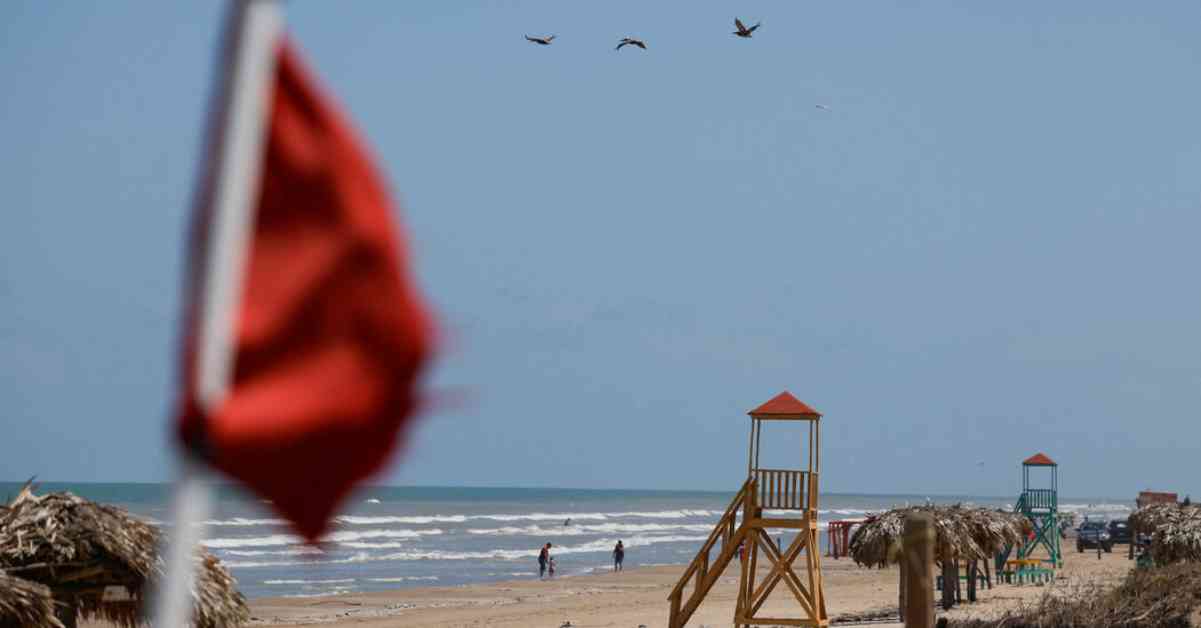Residents in Tamaulipas, Mexico, took a sigh of relief over the weekend as Hurricane Beryl largely spared the country, bringing only moderate to heavy rains in a few areas. The storm, which was initially predicted to make landfall in Mexico twice, shifted its trajectory towards the Texas side, prompting authorities to urge caution and not let their guard down.
Despite the decreased threat of the storm, officials in Tamaulipas remained vigilant, setting up temporary shelters, monitoring dams, and clearing drainage systems to prevent potential flooding and road blockades. Some residents took heed of the warnings, with individuals in flood-prone areas placing sandbags around their homes and cleaning their surroundings.
However, not everyone was as cautious, as some beachgoers defied official advice and enjoyed the sun and waves on popular beaches facing the Gulf of Mexico. Tourists, vendors, and fishers were seen strolling along Bagdad Beach in Matamoros, seemingly unconcerned by the approaching storm. While a few officials urged people to return home, residents dismissed the warnings, confident that Beryl posed no immediate threat.
The arrival of Hurricane Beryl was not unwelcome news for everyone, as authorities in Tamaulipas hoped that the storm and the ongoing hurricane season would provide relief from a historic drought affecting the region. Prior to Tropical Storm Alberto’s impact in May, nearly 97.7 percent of Tamaulipas was experiencing some level of drought. However, recent reports indicated that the drought conditions had significantly improved, with only 16.3 percent of the state still affected.
Héctor Joel Villegas González, the state’s government secretary, expressed gratitude for the much-needed rainfall brought by the storms, highlighting the positive impact on local water sources. The replenishment of dams and lagoons in the region was especially beneficial, providing essential water supplies to thousands of residents.
As the National Hurricane Center issued a tropical storm warning for the northeastern coast of Mexico, residents and officials remained cautiously optimistic about the region’s resilience in facing natural disasters. The community’s ability to adapt and prepare for potential threats, while also embracing the benefits of rainfall and relief from drought, showcased a collective effort towards disaster resilience and environmental sustainability.
In conclusion, the varying responses to Hurricane Beryl in Mexico highlighted the complex relationship between natural disasters, community preparedness, and environmental challenges. While some chose to heed warnings and take precautions, others opted to enjoy the beach and remain optimistic about the storm’s impact. Ultimately, the events surrounding Beryl served as a reminder of the importance of proactive disaster management and the interconnectedness of weather patterns, water resources, and local livelihoods.




